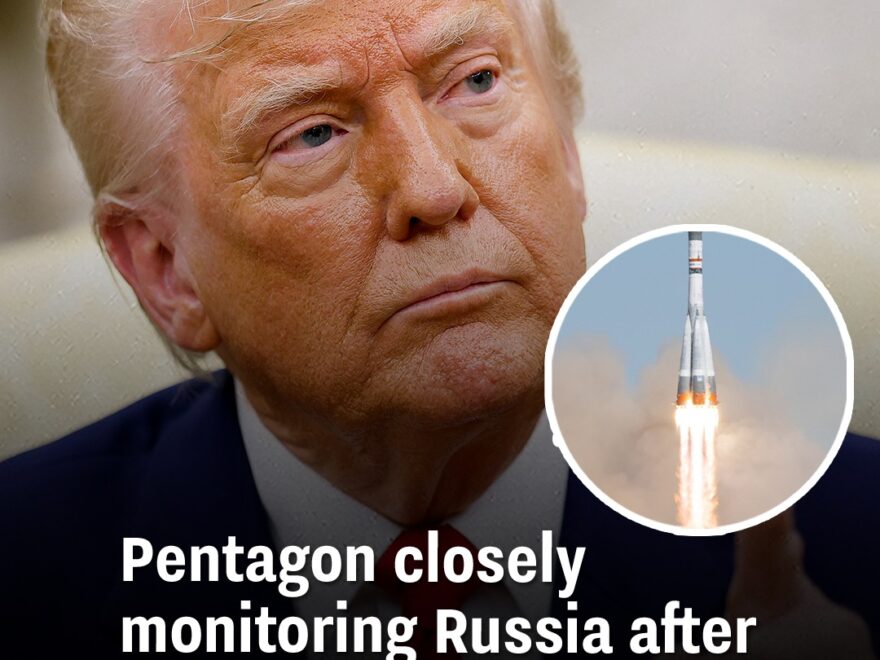US officials are warning people that Russia could be testing out a space weapon after the country launched something suspicious into orbit.
Earlier this year, Russia launched three satellites into orbit aboard the Russian Soyuz rocket and the country has refused to reveal what they are for.
Now the Pentagon is closely monitoring Russia after another mysterious object has been released.
Russia first launched the three satellites, known as Kosmos 2581, 2582, and 2583, back in February.
Suspicions have since been raised that the country could be testing military capabilities in space due to a refusal to explain the purpose behind the launch.
The satellites’ unusual activity has sparked fears that Russia could even be preparing itself for some kind of space warfare.
To make matters worse, the US Space Force noticed a new object nearby which they believe could have been released by one of the Russian satellites.
Jonathan McDowell, who is an astrophysicist at the Harvard-Smithsonian Center and tracks objects in orbit, took to X, formerly Twitter, writing: “Space Force have cataloged a new object associated with the Kosmos-2581/2582/2583 launch. It may have separated from Kosmos-2583 on Mar 18.”
According to a report by CNN, US officials have voiced concerns that both Russia and China are carrying out secretive missions to perform military training in low Earth orbit (LEO).
Speaking to CNN, one official said that the Russian satellites were practicing ‘attack and defend tactics’ as well as working together ‘to surround and isolate another satellite that was positioned in low-Earth orbit, demonstrating how they could potentially target enemy spacecraft in a future conflict’.
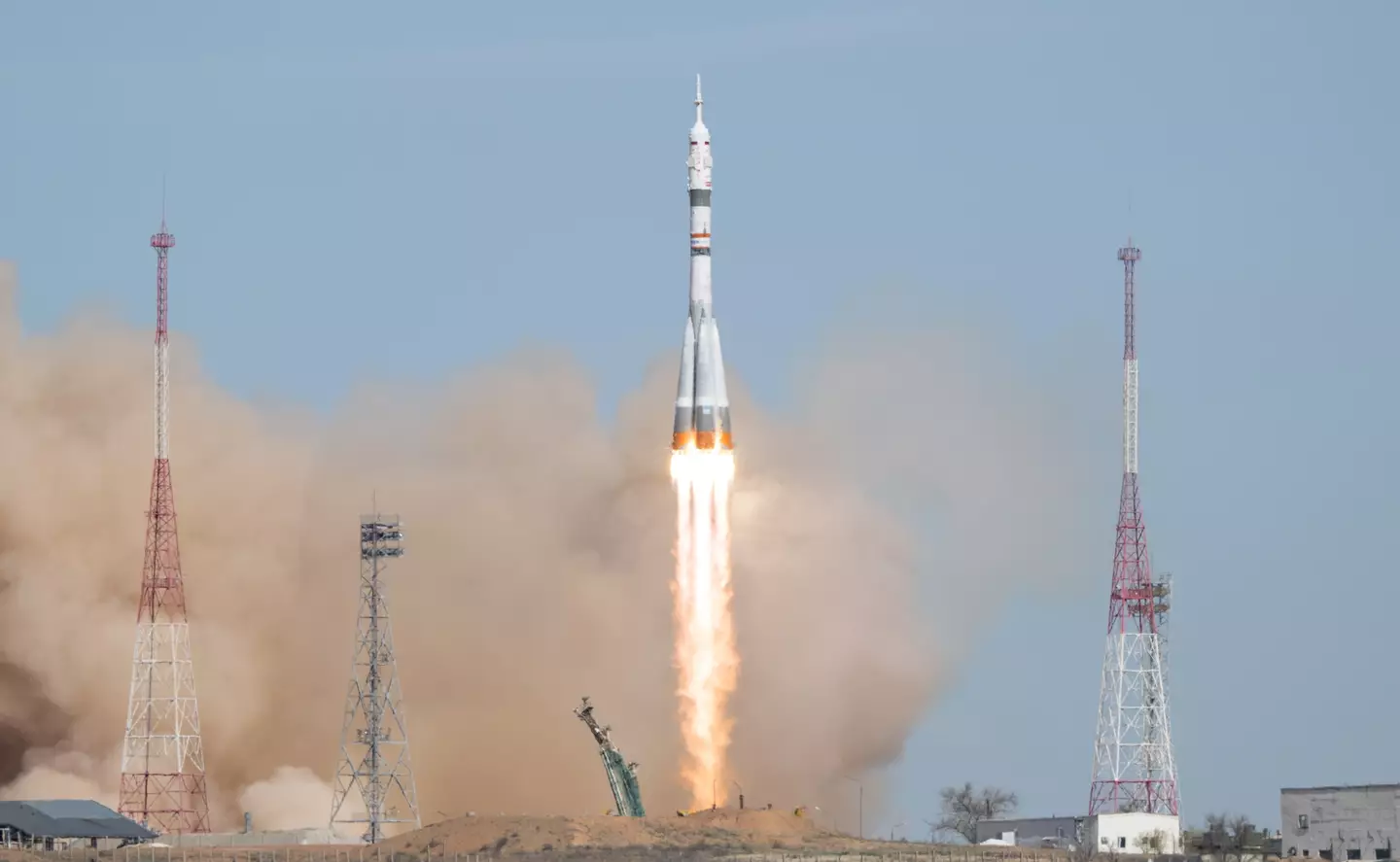

US officials are concerned about Russian activity in space (Joel Kowsky/NASA via Getty Images)
The official went on to say: “Russia wants to take away our advantages in space and they don’t care about collateral damage.”
They added: “[The] US needs to be ready to do more than protect and defend in outer space. Stories about playing defense are stories about losing.”
However, it might not be time to start panicking just yet as McDowell has dismissed these claims made by the official.
Taking to X in a separate post, he wrote: “This seems a big stretch to describe what Kosmos-2581-82-83 are up to.”
Instead, he said that it could just be a ‘coincidence of the fact they are in similar orbits, no evidence of targeting’.
Still, the US is remaining on high alert and the US Space Force intends to continue its close monitoring of the satellites and their behavior in space.
Featured Image Credit: Joel Kowsky/NASA via Getty Images


While they often cooperate with each other, NASA and SpaceX are undeniably rival entities that are gunning against one another in the modern age space race.
Both space agencies have expressed their desires and plans to reach the moon, and NASA often enlists the aid of SpaceX when it comes to transporting its astronauts to and from the International Space Station (ISS).
Most recently it was a SpaceX Falcon 9 rocket that successfully returned stranded astronauts Suni Williams and Butch Wilmore back to Earth after their Boeing Starliner craft experienced technical issues on board the ISS.
While NASA is likely happy to welcome and outsource the assistance of SpaceX, it becomes incredibly easy to understand why they’re so willing to cooperate with Elon Musk‘s private space empire when you look at the cost each company incurs when launching a rocket.


SpaceX’s Falcon 9 launches cost the company ‘just’ $67 million (Gregg Newton/AFP via Getty Images)
As reported by Technowize, SpaceX’s Falcon 9 rocket sets the company back around $67,000,000 every time it launches, increasing by $5,000,000 from the 2022 sum due to inflation.
This might seem like an eye watering amount of money at first glance, but seeing how much NASA spends in comparison will let you soon realize that this is a thrifty effort by Musk and his team.
NASA’s Space Launch System (SLS) reportedly sets the government agency back around $2,000,000,000 every time it’s used, which is just under 30 times more expensive than the SpaceX equivalent and looks even worse when you consider the cost-per-pound of $2,700 (SpaceX) compared to $70,000 (NASA).


NASA launches are nearly 30x more expensive than their SpaceX equivalents, setting the agency back around $2 billion each time (Gregg Newton/AFP via Getty Images)
One of the biggest reasons why SpaceX is able to reduce their costs so significantly is due to the reusable nature of Falcon 9.
The rocket’s first stage booster has been specifically designed to land vertically, which makes it easy for the team to retrieve it and use it for future flights, significantly cutting down costs down the line.
While Falcon 9 is the current rocket of choice for SpaceX, their Starship project could cut down costs even more while also being their biggest and most powerful output.
The current launch cost of Starship is roughly $100,000,000 – which remains still a fraction of NASA’s efforts – and Musk has claimed that this could drop as low as $10,000,000 in the future. Like Falcon 9, Starship is also reusable – although it has also been prone to explosions in recent launch tests.
You have to imagine that SpaceX’s financially impressive launches are part of the reason why its been able to become the most valuable private company in the world, and it’ll also play a key role in their ability to offer intern salaries that far exceed what NASA can table.
Featured Image Credit: NurPhoto / Contributor / Getty


Amazon is set to launch a $20 billion competitor called ‘Project Kuiper’ into space to rival Elon Musk’s Starlink with the first potential launch just days away.
The first batch of satellites are expected to launch into space as early as next week as Amazon attempts to give Musk a run for his money.
The firm has obtained 80 launch missions that will send the Project Kuiper internet satellites into orbit.
The hope is that the missions will result in the creation of a constellation that can compete with Starlink.
Amazon has even said that it has plans to start offering high speed internet to customers ‘later this year’.
While internet from Amazon will eventually be accessible from pretty much ‘any location on the planet’, customers will require a terminal antenna in order to connect.


Amazon hope to create a satellite constellation to rival Starlink (Alan Dyer/Stocktrek Images)
Back in 2023, Amazon said that its smallest design for a dish was a seven inch square which is the ‘most affordable customer terminal’.
Weighing just 1lb and offering speeds up to 100Mbps, the dish is portable for customers to move around with them.
In a statement at the time, Amazon said: “Project Kuiper is Amazon’s low Earth orbit (LEO) satellite network. Its mission is to bridge the digital divide by providing fast, affordable broadband to communities unserved or underserved by traditional communications technologies.”
Amazon also plans to offer larger dishes to provide internet coverage in residential as well as enterprise locations.
These will have speeds up to 1Gbps, and Amazon estimates it will be able to produce these dishes for ‘less than $400 each’.


Amazon hope to eventually offer global internet coverage (Amazon)
Rajeev Badyal, who is the vice president of Project Kuiper, said: “We’ve done extensive testing on the ground to prepare for this first mission, but there are some things you can only learn in flight, and this will be the first time we’ve flown our final satellite design and the first time we’ve deployed so many satellites at once.
“No matter how the mission unfolds, this is just the start of our journey, and we have all the pieces in place to learn and adapt as we prepare to launch again and again over the coming years.”
The company hopes to compete with the likes of Starlink.
Owned by SpaceX, the telecommunications provider began launching Starlink satellites in 2019.
As of last year, the constellation now consists of over 7,000 small satellites that are in low Earth orbit.
The firm currently offers internet coverage to over 100 countries and territories around the world.
Featured Image Credit: MARK GARLICK/SCIENCE PHOTO LIBRARY/Getty Images


Elon Musk has just landed a major government contract worth $5,900,000,000, allowing his aerospace company SpaceX to launch military satellites into space over the next four years.
SpaceX continues to grow its position in the space industry after becoming the most valuable private entity in the world, having already worked with NASA and the US government on a number of key projects.
Musk‘s company played a key role in returning ‘stranded’ astronauts Suni Williams and Butch Wilmore back to Earth, as NASA awarded SpaceX the contract following technical issues with their original Boeing spacecraft.
SpaceX has also been tasked with decommissioning the International Space Station in the next decade, which Musk himself has tried to expedite to a much earlier date despite the protestations of key astronauts.
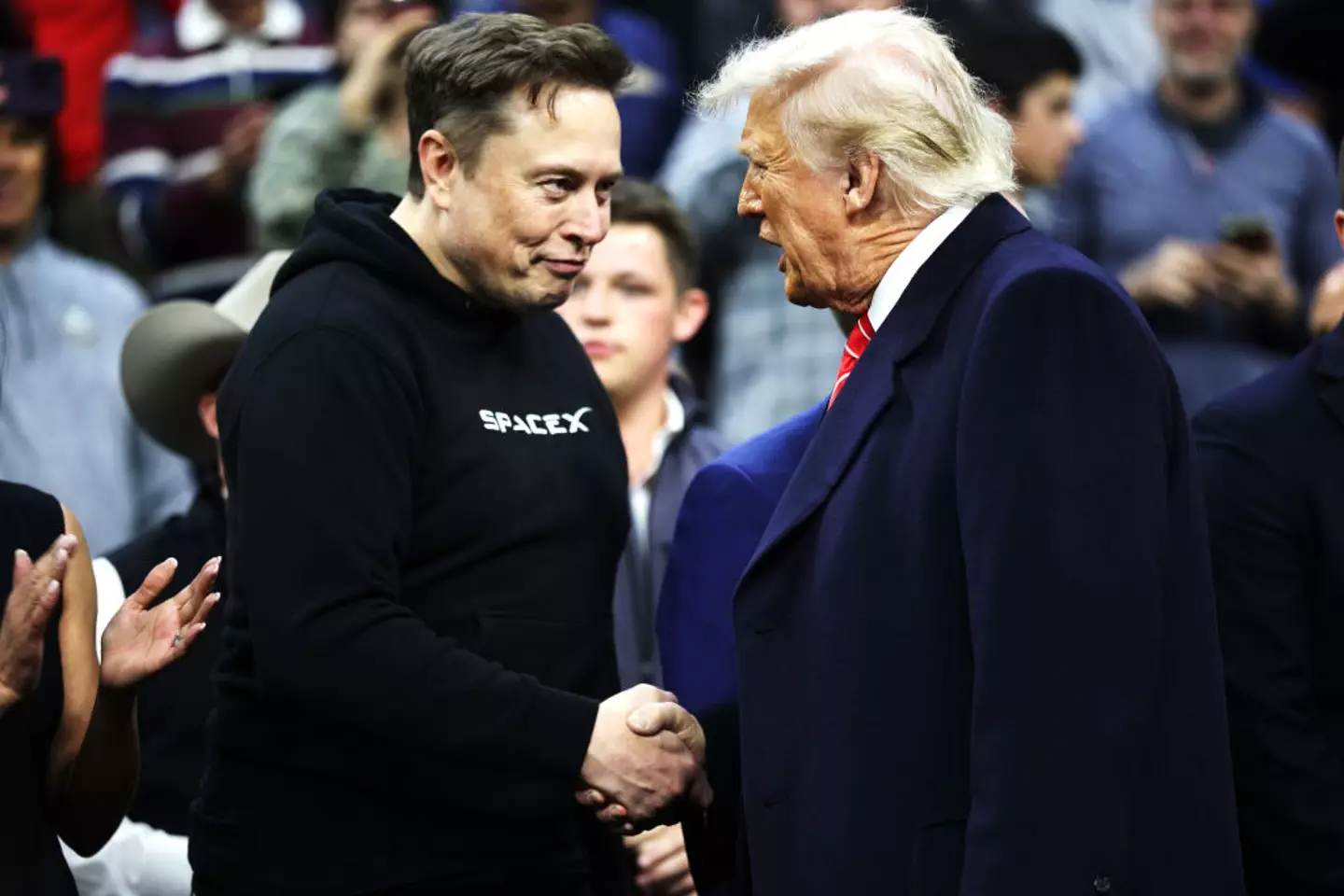

Musk’s SpaceX has received a major contract from the government to launch military satellites into space (Kayla Bartkowski/Getty Images)
The growing influence of private companies in the aerospace world continues to expand as efforts to explore and mine the Moon ramp up, and two of its major players have just got another significant boost from the government.
As reported by NewsX, SpaceX was recently awarded a mega $5.9 billion contract by the US government to launch military satellites into space, alongside Lockheed Martin & Boeing’s United Launch Services ($5.4 billion) and Jeff Bezos‘ Blue Origin ($2.4 billion).
Among the three companies it is planned that 54 satellite launches will take place before 2029, with Musk’s company taking on 28, or over half, of the operations.
“The result is assured access to space for our national security missions,” reads the statement from the US Space Force following the contract agreement, “which increases the military’s readiness.”
Many consider this to only further increase the influence of private companies on US space operations, which perhaps paints a picture of what the future holds for exploration across our solar system.
Additionally, some have also called into question Musk’s current role in government as head of the Department of Government Efficiency as a conflict of interest when it comes to the awarding of contracts.
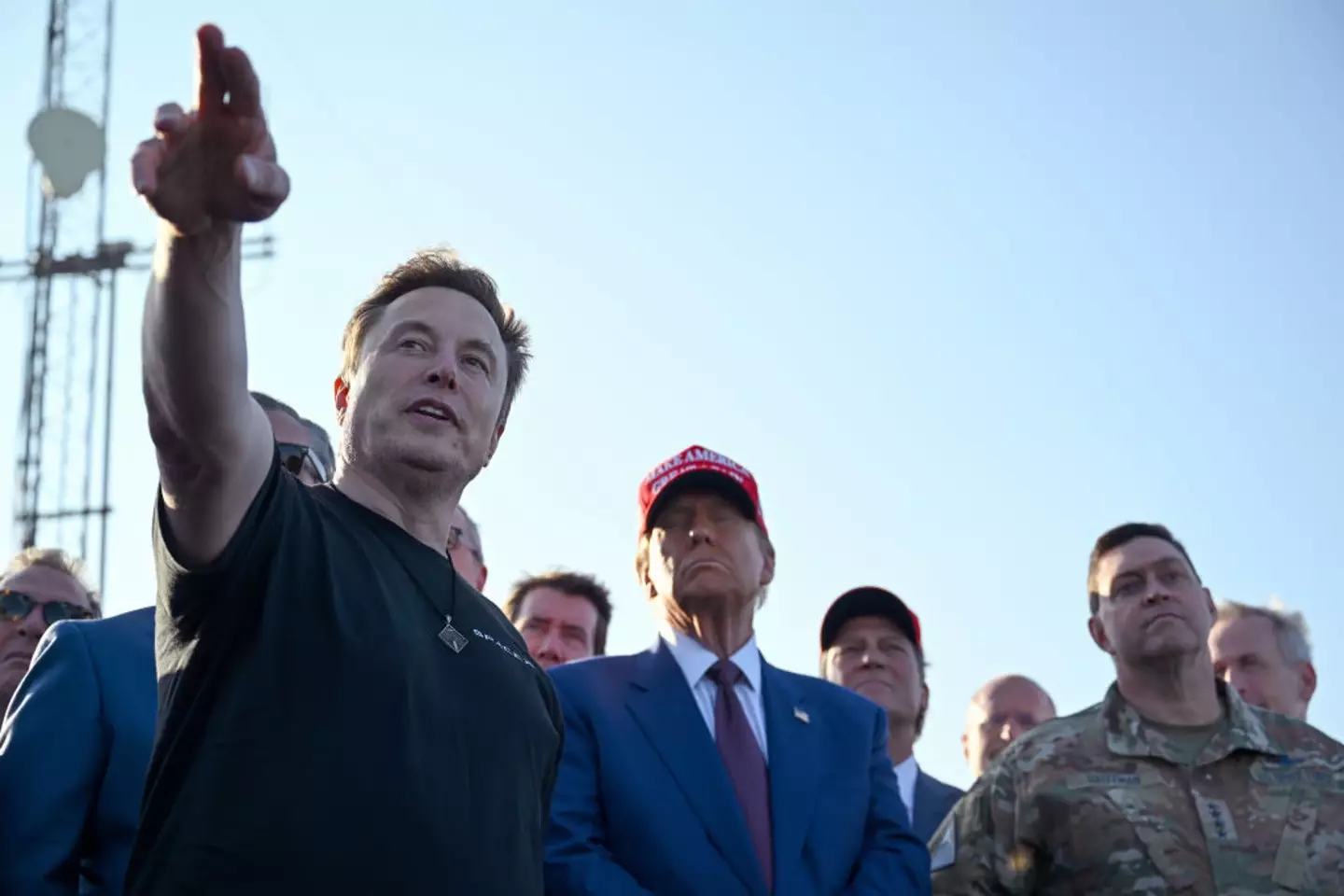

Some have called Musk’s success with government contracts a conflict of interest (Brandon Bell/Getty Images)
While President Trump has argued that Musk receives no financial benefits or advantages as a consequence of his role, it’s not hard to imagine why some remain skeptical that his position of power can influence decisions made within government – even if he is set to leave his role shortly.
This isn’t the first time that one of Musk’s companies has massively benefitted from a government contract since taking a position in Trump’s administration, as SpaceX subsidiary Starlink was recently awarded a $2.4 billion air traffic control contract that was intended to go to Verizon instead.
Featured Image Credit: Brandon Bell via Getty Images


US President Donald Trump’s new tariffs could have significant ramifications on the space industry, leading to significant production delays and major cost increases across the board.
One week on from President Trump’s bombshell tariff plan was announced it’s already clear the dangerous effects that it’s had on not only the US economy, but global markets too.
Experts have indicated that the global tariffs – which even include areas with zero inhabitants – could ‘completely reshape’ key industries across America, and multiple key individuals and companies have already reacted strongly to the economic plans.
Nintendo has delayed pre-orders for their new console in what many predict to be an incoming price hike, and even Elon Musk has spoken out against the plan, urging the president to create a ‘free trade zone’ between the United States and Europe.
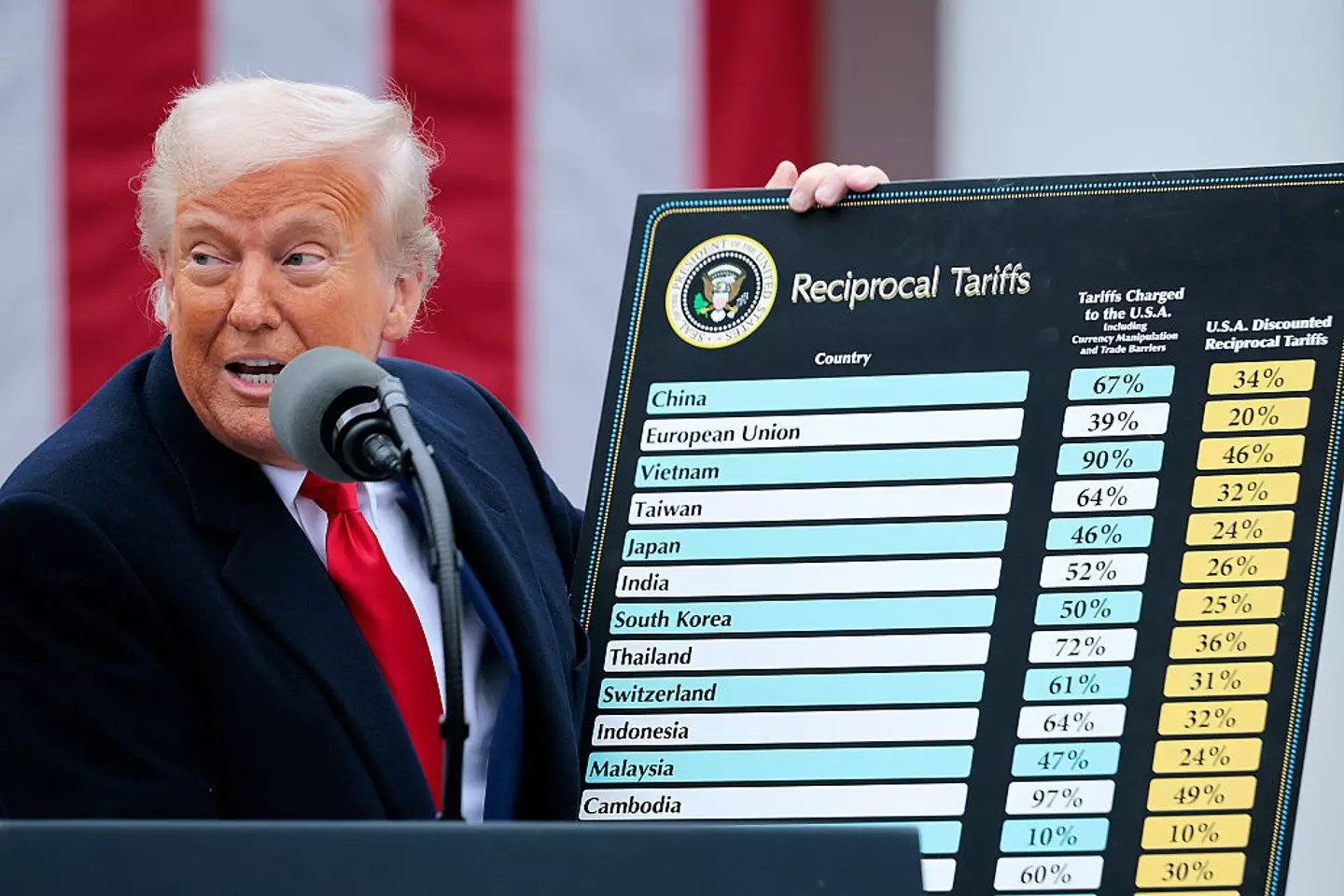

Trump’s new tariffs have already had a significant effect on the US and global economy (Chip Somodevilla/Getty Images)
While some companies like Ford have taken advantage of their predominantly US-production chains to offer lower prices for consumers, the space industry as a whole might not be so lucky when it comes to life after tariffs.
As reported by SpaceNews, major parts of the government-funded and private space industry are incredibly reliant on both foreign materials and labor when it comes to manufacturing new technology.
Critical materials like steel, aluminum, and various technology that remains essential for the construction of new spacecrafts, satellites, and more are sourced from countries like China – and Trump’s continued aggressive tariff strategy puts that in jeopardy.
It’s not just China either, as Thales Alenia Space in Europe supplies a large number of pressurized modules used in the production of a new commercial space station, and widespread tariffs suddenly make these far more expensive to import.
In theory, this will put pressure on US-based space agencies to move production in-house and rely less on exports, but this is not a quick or cost-effective solution that many companies will be able to make in the short term.


New tariffs will almost certainly cause significant delays in the space industry (Gregg Newton/AFP via Getty Images)
It’ll take years to implement the changes necessary to deal with the tariffs, and many are understandably wary to make any significant movements due to the instability and unpredictability of Trump’s current economic plans.
As a whole, regardless of whether a space agency decides to continue importing at far greater prices or opts to move production to America, it’ll significantly hamper progress in the industry from the perspective of cost, materials, and time.
Musk has already been hit by the negative effects of tariffs on the automotive industry – which was arguably a major reason why he made his dissenting plea in the first place – but its effects on his aerospace company SpaceX could also push him and other major figures in the industry to oppose the Trump’s aggressive economic plan.
